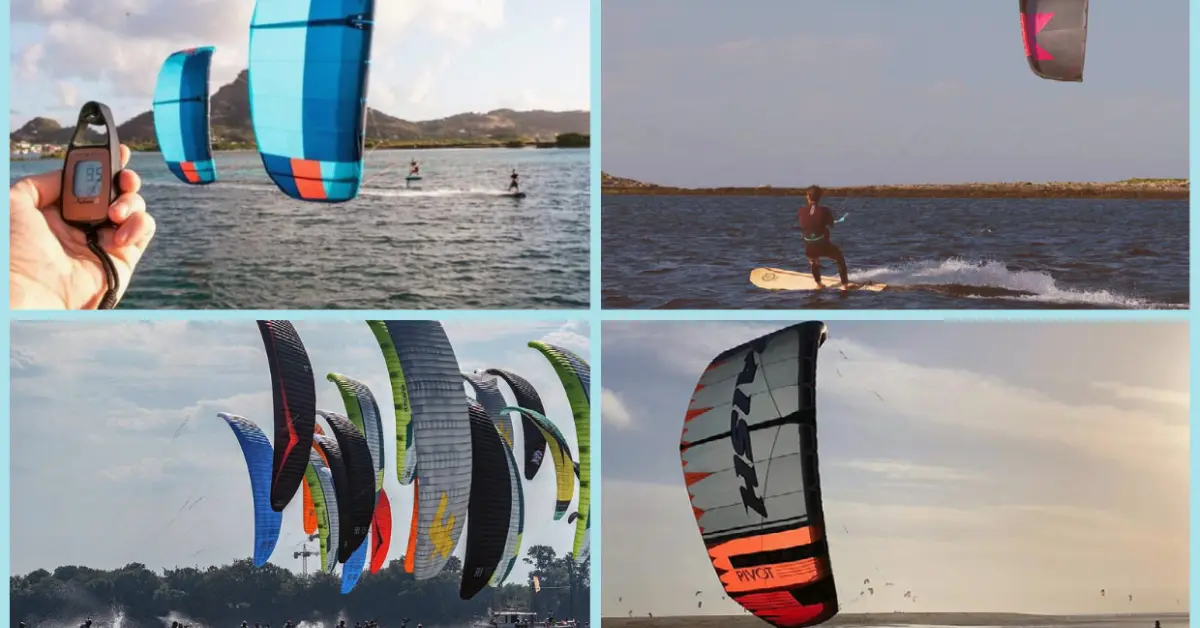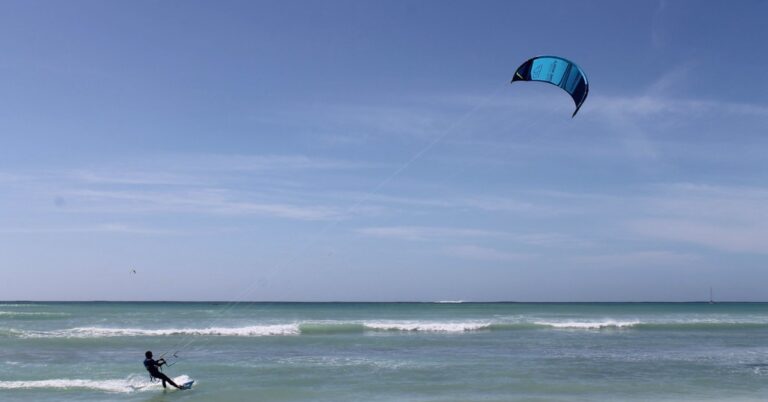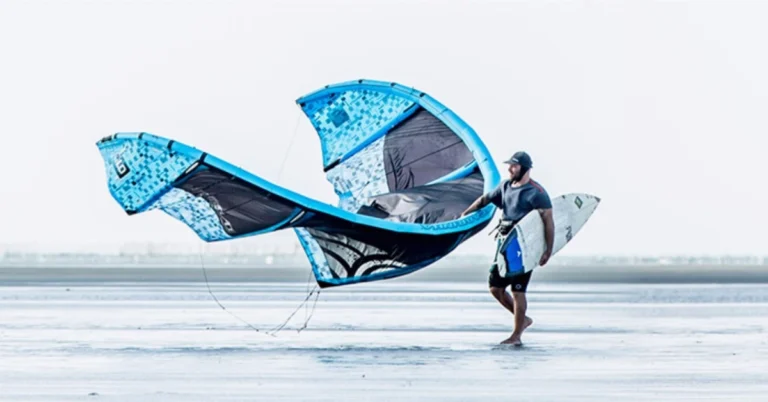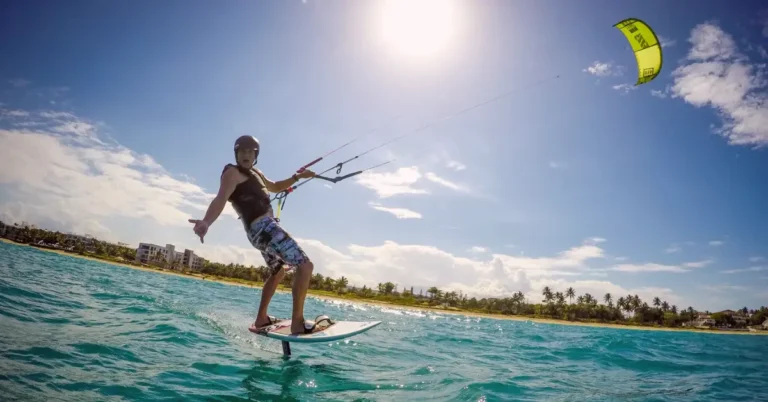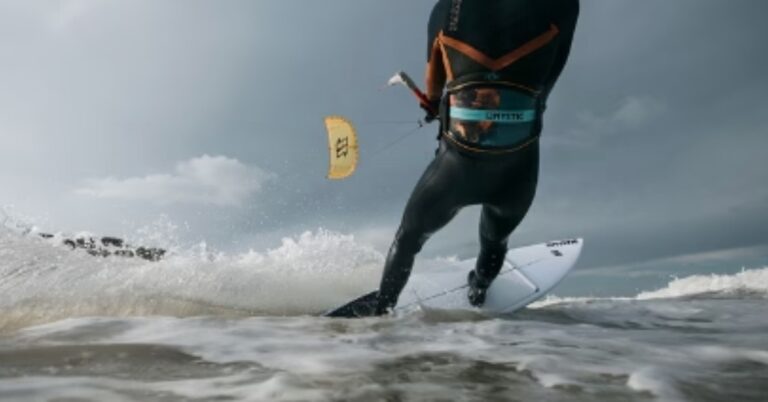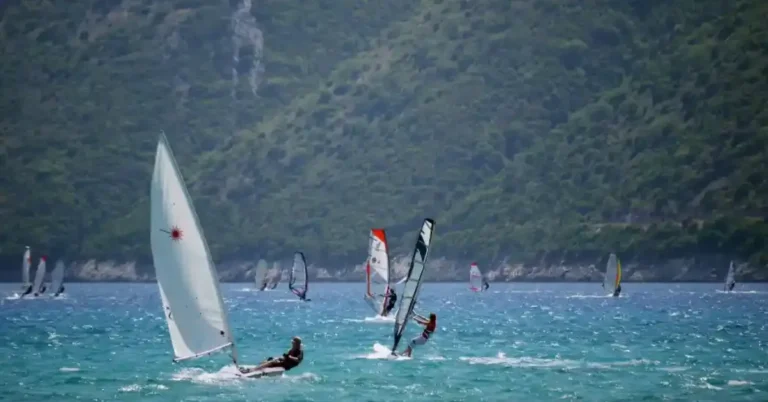How Much Wind is Needed for Kitesurfing
The minimum wind speed for kitesurfing varies based on factors like weight and equipment. Typically, 10-13 knots (12-15 mph) is sufficient for an average-weight kitesurfer, while heavier individuals may need 13 knots (15 mph) or more.
For kitefoiling, 5-7 knots are adequate once the kite is airborne. Kitesurfing in low wind, around 8-16 knots (wind force 3-4), has gained popularity, especially with high-performance foil kites and hydrofoil boards enabling riding even in 5-6 knots.
Beginners usually start in 14-21 knots (wind force 4-5), with experienced surfers venturing in winds exceeding 27 knots (wind force 7). Understanding wind force conversion tables aids in estimating conditions accurately.
Also Read: How to Sew a Kitesurfing Kite
Wind Speed & Different Kite Sizes
Now that we understand that the ideal wind speed required for kitesurfing differs, let’s look at the minimum wind speed needed for different kite sizes.
How much wind is needed for 9m Kites?
For a 9m kite and average weight, you’ll need at least 15-20 knots of wind for smooth kitesurfing. Heavier riders require stronger winds due to their added weight, so expect around 25-30 knots for a heavy surfer on a 9m kite.
How much wind is needed for 12m Kites?
Skilled kitesurfers with average weight can ride with 14-18 knots of wind using a 12m kite, requiring expertise to manage its larger size. Heavier surfers over 200 lbs need 16-20 knots of wind speed for a 12m kite. Remember, wind speed requirements rise with the kitesurfer’s weight, a crucial factor to consider when choosing a kitesurfing location.
How much wind is needed to learn Kitesurfing?
Learning to kitesurf is like driving a Formula 1 car without prior experience – it can lead to trouble. For safe learning, light winds of 6-12 knots are recommended. Learning with gentle winds allows you to understand kite handling without risking yourself or others.
Controlling the kite becomes more complicated as wind speed increases, so starting with lighter winds is crucial for beginners. Additionally, the board’s buoyancy matters; larger boards need less wind, allowing smoother learning experiences.
Important Factors Needed for Kitesurfing
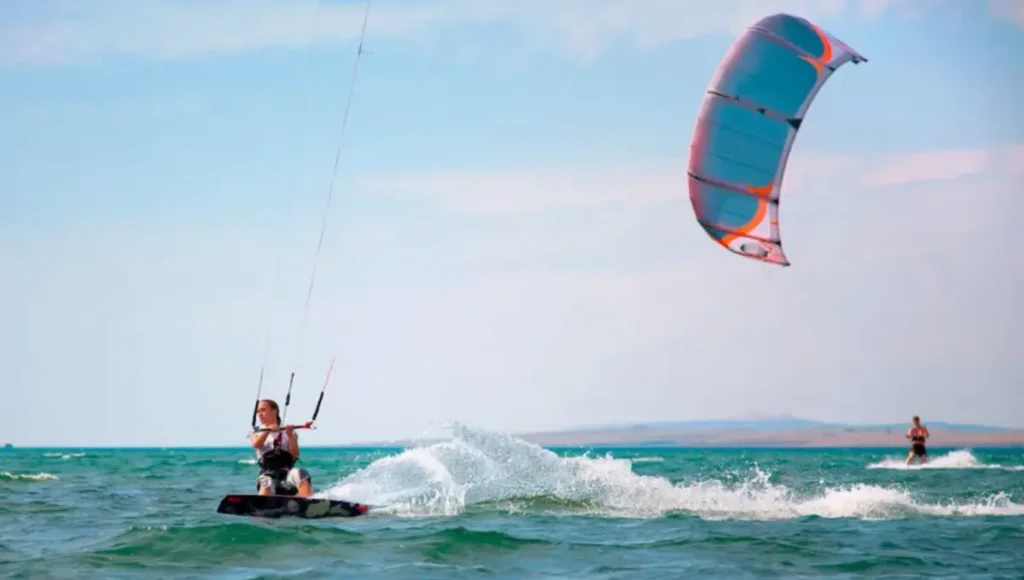
Aside from wind speed, several other crucial factors affect kitesurfing experiences:
Wind Quality
Stable winds are ideal for kitesurfing, while gusty or strong winds pose challenges, especially for beginners. Choosing spots with steady winds and avoiding strong gusts ensures safer learning experiences.
Wind Direction
Optimal kitesurfing experiences rely on side-on-shore or side-shore winds blowing at a 45° angle towards the shore. Direct onshore winds can thrust surfers towards the shore, leading to accidents, while offshore winds can carry surfers too far out to sea, making it difficult to return.
Wave Quality
Flat water or small waves around 1-2 feet are safest for beginners. More giant waves combined with strong winds pose risks for learners and beginners, making them suitable only for moderate to expert kiters.
Conditions to Avoid During Kitesurfing
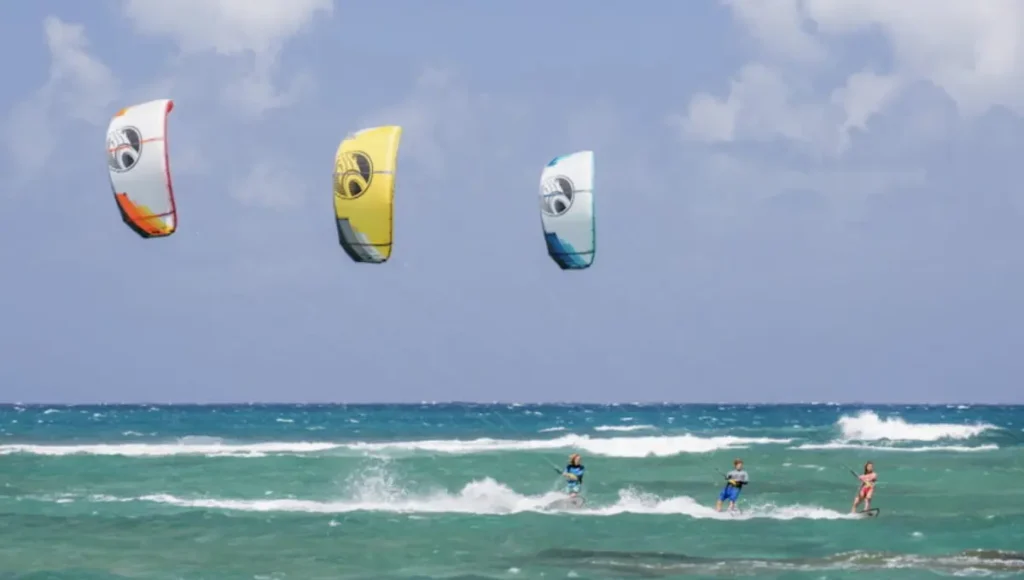
When kitesurfing, it’s crucial to avoid certain conditions to stay safe:
What is considered good wind for kitesurfing?
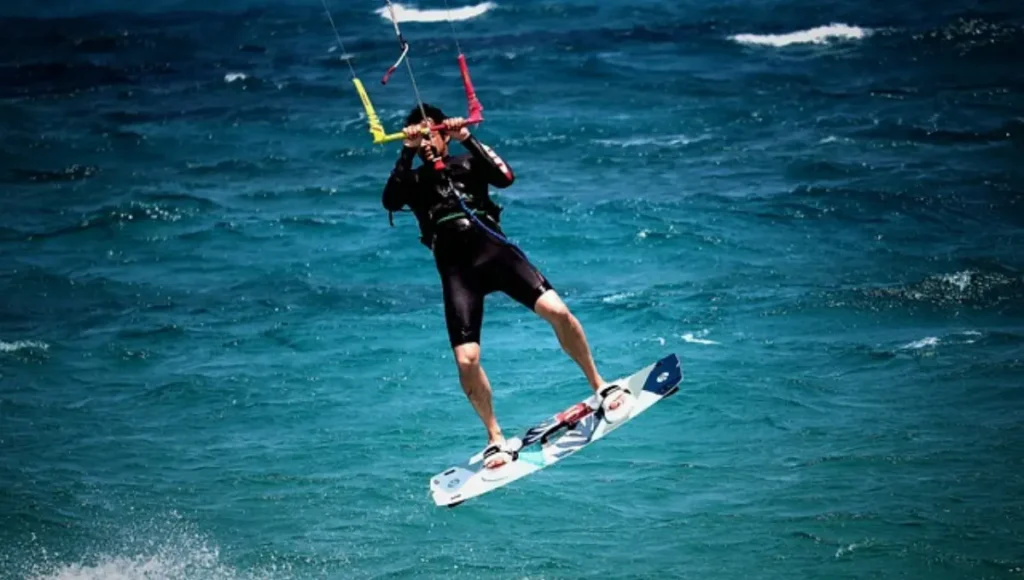
Good wind for kitesurfing typically falls within the range of 14-21 knots (wind force 4-5). However, this can vary based on individual skill levels, equipment, and preferences.
Beginners may prefer lighter winds around 10-13 knots (wind force 3-4) for more accessible learning, while experienced kitesurfers may enjoy stronger winds exceeding 27 knots (wind force 7) for more challenging and exhilarating rides.
Ultimately, a good wind for kitesurfing provides enough power to propel the kite and rider across the water while remaining manageable and safe.
How important is wind quality for kitesurfing?
Wind quality is crucial for kitesurfing as it significantly impacts the overall experience and safety of the rider. Stable, consistent winds provide the necessary power to propel the kite and rider across the water smoothly, making maneuvers easier to execute and control. In contrast, gusty or turbulent winds can make kitesurfing challenging, especially for beginners, as they may struggle to maintain control of the kite and board.
Additionally, wind direction plays a vital role, as riding with side-on-shore or side-shore winds is ideal for safety and efficient navigation. Overall, favorable wind quality enhances the kitesurfing experience, while poor wind conditions can pose risks and hinder performance.
Frequently Asked Questions
Conclusion
Kitesurfing relies on wind, so checking wind speed is crucial before heading out. Ideally, you’ll want a minimum wind speed of 12-15 knots for smooth kitesurfing. Also, consider the season, as some spots only have winds during specific months.
Avoid going out when the wind is too strong, as it can damage your kite or push you too far into the sea, leading to accidents. Always prioritize safety and optimal wind conditions for the best kitesurfing experience.
